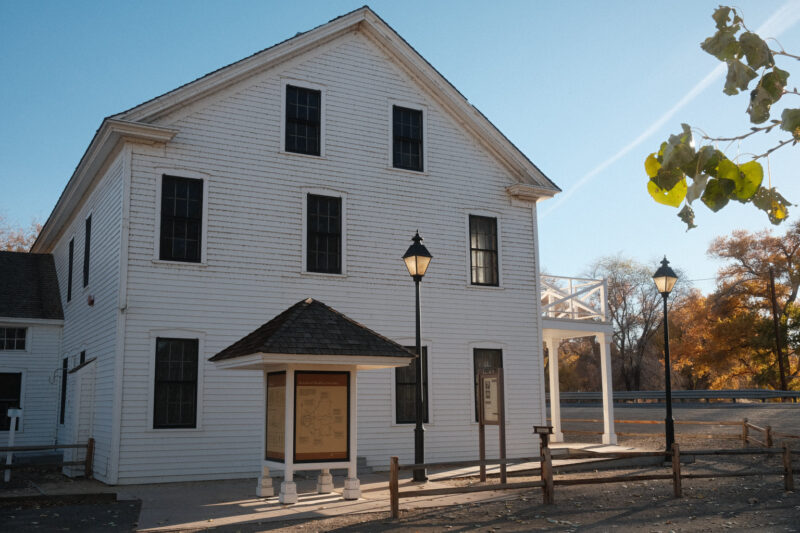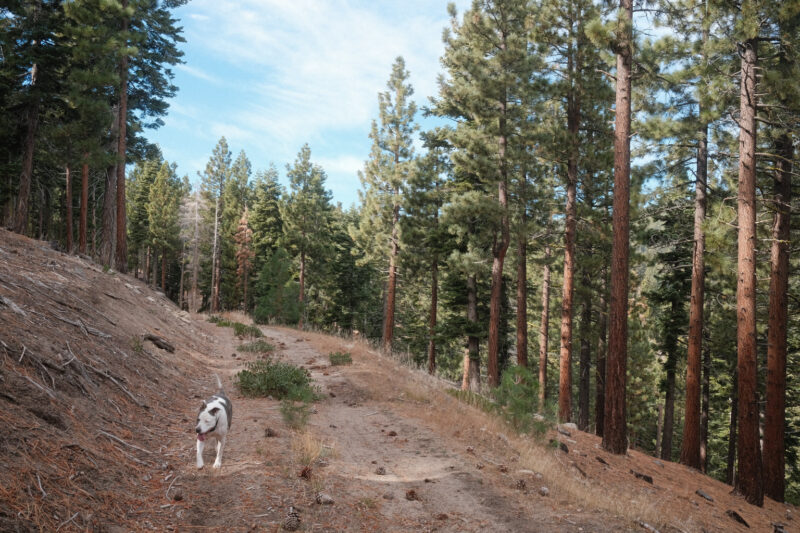
A couple of weekends ago I decided it was time to not work all weekend. On Saturday morning, The Girl and I headed out, not knowing where I might end up. We walked for an hour out at Silver Saddle Ranch, then headed east on US 50. I was on the phone with my buddy Dick and indicated that I needed to get out and do something away from the house.
At first, I thought I would drive down to Yerington and activate the wildlife management area north of town. But, as I turned south on US 95, I decided that either Buckland Station or Ft. Churchill were both closer and needed to be activated.
Buckland Station won the coin toss. I parked the rig and looked for a place to deploy a wire. Seeing none, I retrieved the drive-on mast mount and the 10m SOTAbeams mast from the rig and set them up. I also retrieved the Elecraft KX3 and a small battery from the rig.
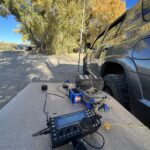
I sat down at my folding table with my back to the sun (it was chilly), started a log on my iPhone (HAMRS), and listened on 20m near the QRP watering hole of 14.060MHz. With nothing heard, I called QRL? (“Is the frequency in use?”) a couple of times, then hit the message button to transmit “CQ CQ POTA DE AG7TX AG7TX POTA K” a couple of times, then paused to listen for a caller.
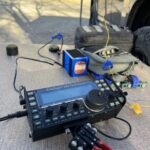
I worked the bands for an hour or so and made my quota for an activation. I was cold, so The Girl and I headed home after a brief pit stop.
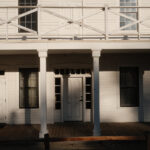
I grabbed a snack because my blood sugar has been falling unexpectedly, some water, and a battery for the radio. We loaded up into the rig and headed west to Spooner Summit. I pulled off onto the forest road and parked the rig at the staging area where I like to work.
The Girl and I then headed out to walk before I set up a radio. Again, I talked to my buddy in Montana as I walked. But I kept my eyes open for critters as I have seen a big coyote who is not afraid of humans several times.
She was ready to rest when we returned to the rig, so I gave her some water and put her in the 4Runner. She settled right down for a nap in the sun.
I retrieved the new line-throwing kit from the 4Runner, stretched out the line, and affixed the throw weight. After four or five throws, I was unable to hit my target branch. Instead of fumbling more, I retrieved the drive-on mast mount and the 10m mast from the rig and setup a wire antenna. I again used the Elecraft KX3 barefoot (10-15w of power) and set up my table and chair.
A wind had come up, maybe gusting to 10–15mph, but variable direction. It was kinda-sorta from the south, but was curling around to the point I could not get shelter.
So I put on my heavier hoodie, put my back to the wind (and the sun), and worked the radio. The higher bands have been good lately, so I started on 10m and worked my way down.
Again, it took an hour or hour-and-a-half to make my activation quota and work the bands dry. The sun was falling lower in the sky and I was cold, so I quit.
It did not take long to put away the station and get The Girl out for a last bit. She looked for critters and peed until I called her in and we got into the rig.
It was another good day and a good day for me to get outdoors. The Girl loved it, too.
I learned a few more things.
- I need practice with the throwing kit. I suspect there is something of an art to using a throw weight and line to hit a particular target.
- I need some kind of shelter for cool-weather activations. I looked at a fishing hut last year, but did not buy one. A small fishing hut that folds up would make a good operating shelter. I could deploy a heater (I have one) and place a mat for The Girl.
- My principal reservation about a hut is the lack of windows. I like being outside because (in part) I like the sun and the light. I do not want my activation shelter to cut those things off.
- I need the means to heat water and make coffee, tea, soup, or a hot meal. I have used the Trangia burner in another stove I have in my inventory. But it is not as handy as I want. Hence, I am working on an upgraded kit and some of the results are posted on this weblog.
- The iPhone works for spotting myself and for logging, But I think a Rite-in-the-Rain notebook and pencil should be in my field kit. I am thinking again of reducing my dependence on technology, although it is good to be able to spot myself for SOTA/POTA activations.
- HAMRS is well suited to logging POTA activations. It has features that display other activators and make it easy to log their information for park-to-park chasing.
- I am not sure I ever documented my post-processing of POTA logs. Most of my activations are multiple parks, at least two. I have a couple of favorite places that are three or four park activations. That means the post-processing of my log requires some editing so that chasers get credit of more than one park. I also get credit for activating multiple parks.
- The new field cooking kit is coming along. I will have the ability to make a hot drink or food in the field. This is a critical safety issue as hypothermia is real and it does not have to be very cold for it to strike. Hot food and drink are part of combating environmental dangers effectively.
- I am really enjoying Morse Code. I still operate phone part of the time. But the ability to deploy a small radio kit and make contacts thousands of miles away with a few watts means everything is smaller, lighter, and simpler than a more powerful radio kit.
That is all I can think of. It was a good couple of days in the field. Life is good.
